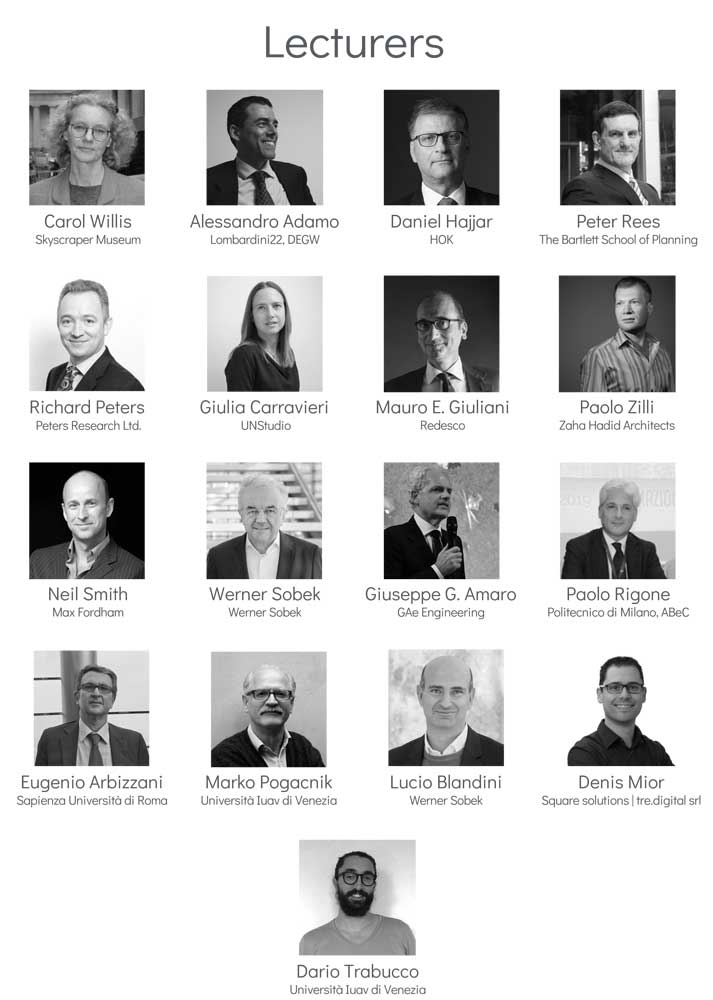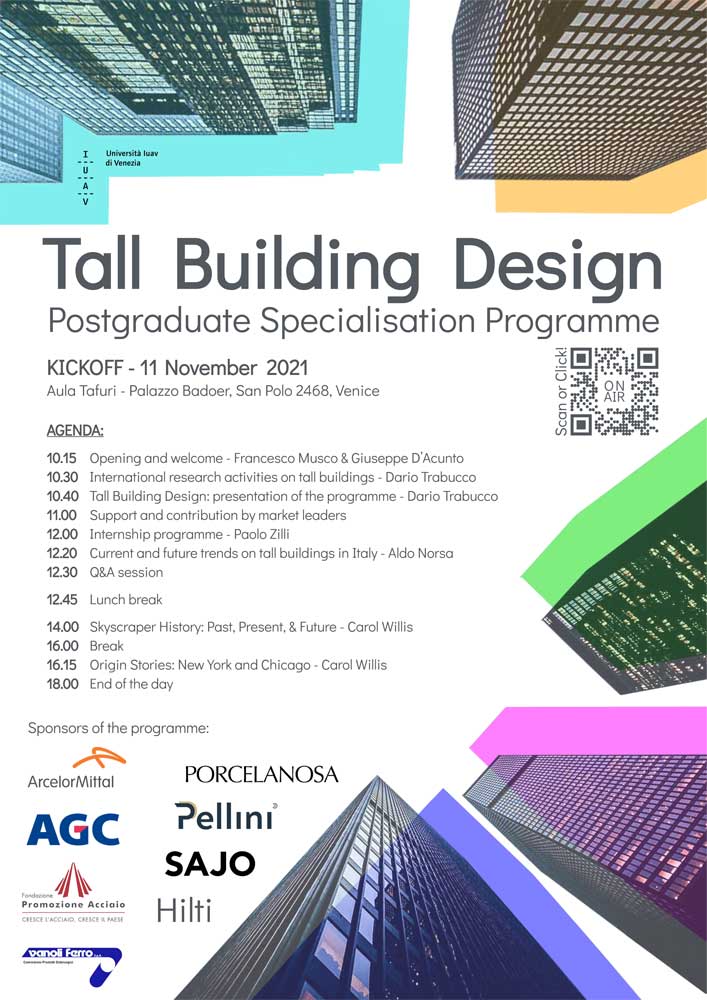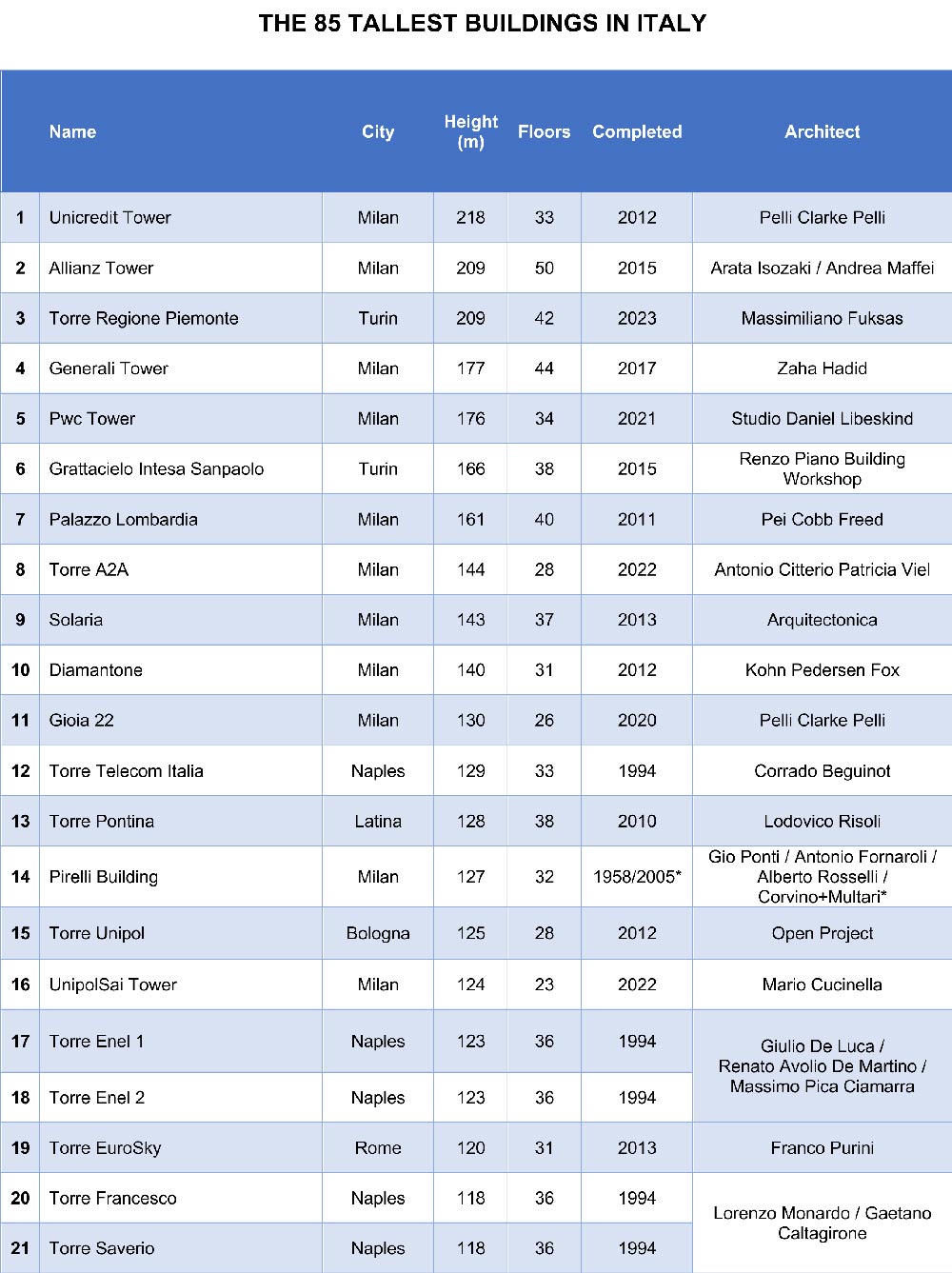Trabucco & Carol Willis for the ‘Tall building Design’ Master
Iuav: the ‘Tall building Design’ Master kicks off
In a world where the concentration of inhabitants in cities keeps on increasing and where land consumption has reached saturation levels, cities need to grow vertically. People specialised in the construction of taller and taller buildings are therefore needed. It is from this consideration that the Master in Tall Building Design was launched last November at the IUAV University in Venice (Italy).
Open to international graduates and professionals, the master is organised by Dario Trabucco (Iuav University) and Paolo Zilli (Zaha Hadid Archtects), with the collaboration of the Iuav team including Alberto Balzan, Martina Belmonte and Claudia Cabrera.
Starting on 11th November 2021, ‘Tall Building Design’ will cover an entire year and will allow students to explore all the issues related to this specific type of building. The lecturers include university professors from various Italian and international universities (such as Dario Trabucco and Marko Pogacnik for Iuav, Paolo Rigone from the Polytechnic of Milan, Eugenio Arbizzani for La Sapienza University in Rome, Carol Willis from the Columbia GSAPP in New York, Peter Rees from The Bartlett School of Planning, UCL University College London), but also professionals from the world of construction, including Paolo Zilli (Zaha Hadid Architects), Alessandro Adamo (Lombardini22, DEGW), Giuseppe G. Amaro (GAe Engineering), to name but a few.
The programme of the first day of the Master in Tall Building Design
The world of vertical transport will not be neglected either: Richard Peters (Peters Research Ltd.) will give some lectures on these topics.

All lecturers of the International Master’s Degree Course ‘Tall Building Design’
The master is divided into four modules, each lasting three months: Basics, Advanced, Studio and Practice. Starting from the historical aspects and the theoretical foundations, the study path will lead to a practical experience at some of the most renowned architectural firms in Italy and worldwide. These include: ‘RPBW Architects’ (Renzo Piano Building Workshop), ‘Antonio Citterio Patricia Viel’, ‘Stefano Boeri Architetti’, ‘Lombardini22’, ‘Studio Marco Piva’, ‘Zaha Hadid Architects’, ‘Werner Sobek’ and many others. For more details, see issue 4/2021 of Elevatori Magazine, where Dario Trabucco and Aldo Norsa explained in detail the modules of the master’s degree.
The first lesson
During the first day of the master course, after Dario Trabucco’s welcome address, Professor Aldo Norsa showed the ranking of the tallest Italian skyscrapers (in the table), which shows that Milan is the city with the highest density of tall buildings in Italy. At the top of the list are two urban buildings: the Unicredit Tower (218 metres and 33 floors, it is the tallest building in Italy) and the Allianz Tower (209 metres and 50 floors, it is the tallest building in Italy in terms of the number of floors).
Introduction to the Master by Professor Dario Trabucco, Iuav
The list of Italy’s 85 tallest skyscrapers compiled by Guamari and Prof. Aldo Norsa
In the image above, the first 21 buildings in the ranking of the 85 tallest skyscrapers in Italy, drawn up by Aldo Norsa (Guamari).
For the complete ranking, click here and watch the full pdf.
Carol Willis lesson
Carol Willis (Associate Professor of Architecture at Columbia GSAPP, as well as founder, director and curator of The Skyscraper Museum in New York City) then gave a historical overview of the birth and evolution of tall buildings.
As a historian of architecture and urban planning specialising in the development of urban construction in the United States, Willis analysed the two cities (New York and Chicago) where tall buildings were first developed, from the late 1800s to the present day.
Interviewed by Elevatori Magazine, Carol Willis said: “The importance of the lift? It is a fundamental invention, without which the skyscraper, as a building, would not be possible, because it overcomes the architectural barrier of the floors, which a human being could overcome on foot”.


